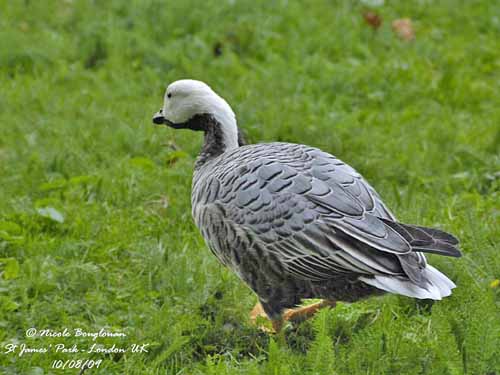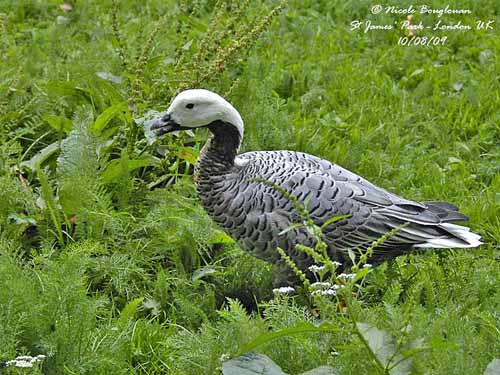
Fr: Oie empereur
All : Kaisergans
Esp : Ansar Emperador
Ital : Oca imperatrice
Nd: Keizergans
Sd: Kejsargås
Text and pictures by Nicole Bouglouan
Sources :
HANDBOOK OF THE BIRDS OF THE WORLD vol 1 by Josep del Hoyo-Andrew Elliot-Jordi Sargatal - Lynx Edicions - ISBN: 8487334105
GUIDE DES CANARDS, DES OIES ET DES CYGNES – de Steve Madge - Delachaux et Niestlé - ISBN: 2603013769
BirdLife International (BirdLife International)
Bird Web (Seattle Audubon Society)
What Bird-The ultimate Bird Guide (Mitchell Waite)
Emperor Goose
Chen canagica
Anseriforme Order – Anatidae Family
BIOMETRICS:
Length: 66-89 cm
Wingspan: 119 cm
Weight: 2760-3130 g
DESCRIPTION:
This stocky small goose has low numbers and restricted range in NE Siberia and W Alaska coasts. But this species is under management in order to help the increase of populations.
Both sexes are similar, with female slightly smaller than male.
The adult has dark blue-grey plumage with scaled pattern overall, due to white-edged feathers with black subterminal band.
On the upperwing, flight feathers are greyish-black. The underwing is rather grey.
The tail is white with dark undertail-coverts.
Head and hindneck are white, contrasting with the blackish foreneck. However, the goose may be very different when it has strongly stained head and neck by iron oxide present in tidal waters.
The fairly short bill is pink with bluish base and black lower mandible. The eyes are dark brown. Legs and webbed feet are orange-yellow.

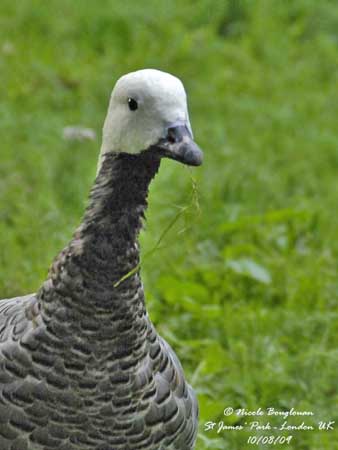
The juvenile is duller than adults with mottled grey head and neck. Its plumage is barred brown on back, with narrower scaling. Its bill is black, legs and feet are olive-brown.
VOICE: SOUNDS BY XENO-CANTO
The Emperor Goose in flight utters raucous “kla-ha kla-ha” and also high-pitched “yang-yang”. This species produces quacks too, but it is usually more silent than other geese.
HABITAT:
The Emperor Goose breeds in open areas in Arctic tundra, near coastal lagoons, or close to inland lakes and freshwater pools. This species winters along rocky coasts, on soft shores with seaweeds, and in sheltered sites such as estuaries.
RANGE:
The Emperor Goose is migratory and breeds on coasts of NE Siberia, but mainly on W Alaska coasts. The non-breeding birds winter in Gulf of Alaska and Aleutian Islands, sometimes to Kamchatka.
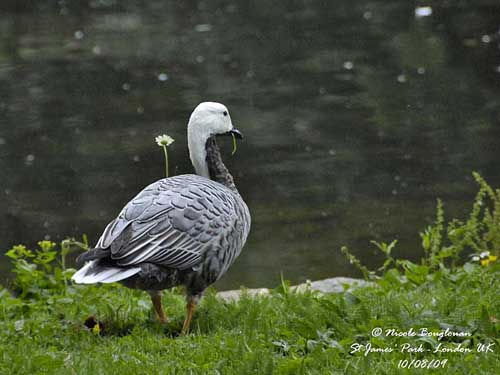
BEHAVIOUR:
The Emperor Goose feeds on plant matter such as grasses, leaves of sedges and berries during the breeding season. But during winter, it also takes seaweed and algae on sea shores, and some animal food such as crustaceans and molluscs, especially barnacles. The head becomes stained orange-red, due to iron oxide concentration in tidal areas. The bird looks very different.
Like numerous Anatidae species, this goose feeds by grazing.
They usually feed in family groups, but during winter, they gather in large flocks for moulting. The breeding adults moult in areas fairly close to their breeding grounds, whereas the non-breeding birds gather in large numbers in several other sites.
With their wintering grounds on Aleutian Islands, the autumn migration is fairly short.
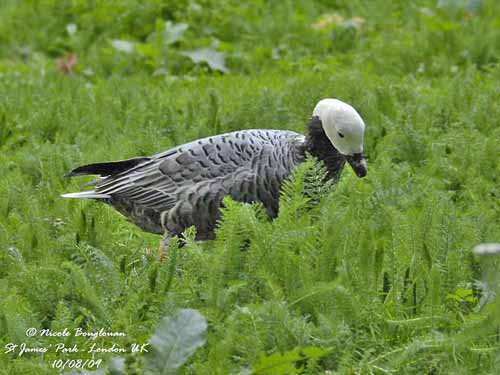
The Emperor Goose breeds in loose colonies, and the female selects the nest-site on islets in marshy tundra. The male remains in the vicinity while she builds the nest and lays the eggs, and it chases potential rivals from the nesting site. It protects the nest from predators, chasing them or trying to distract them, in order to lead them away from female and young.
The most typical threat actions include bowing, wing-flapping and head-jerking. The female defends only the nest-site and she does it strongly, adopting aggressive postures and uttering loud calls.
This species is monogamous.
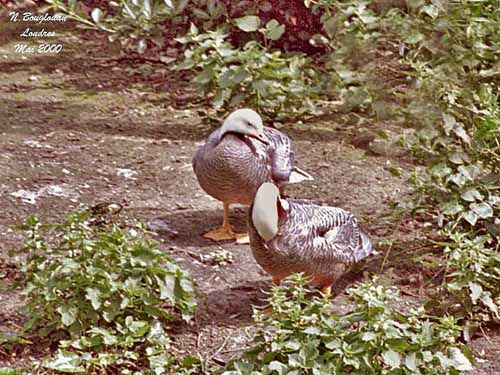
FLIGHT:
The Emperor Goose flies lower than other goose species, with faster wingbeats. But the strong, pointed wings allow sustained direct flight.
REPRODUCTION:
The breeding season starts in late May/early June.
The Emperor Goose breeds in loose colonies. The female selects the nest-site in low vegetation for better visibility, and builds the nest, a shallow depression in the ground. The interior is lined with grass, feathers and down. The male does not take part in nesting duties, but it remains in the close vicinity and defends the nest and its family against intruders such as rivals and predators.
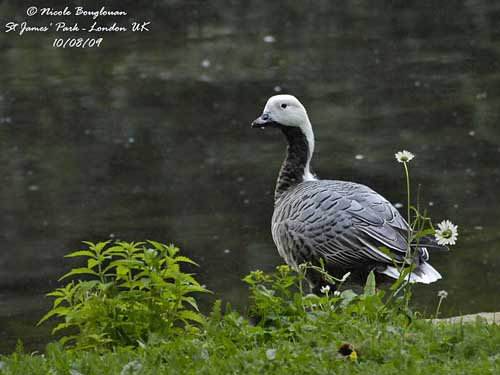
The female lays 1-8, but usually 5 creamy-white eggs. She incubates alone during 24-25 days. At hatching, the chicks are covered in grey down above and whitish below. They are precocial and usually leave the nest in the first day. They can swim and walk within hours. They fledge about 50-60 days after hatching. They are sexually mature at 2-3 years of age.
DIET:
The Emperor Goose feeds mainly by grazing. It takes grasses, leaves of sedges and berries while breeding. On the wintering grounds on rocky coasts, this species feeds on seaweeds and algae, complemented with some crustaceans and molluscs.
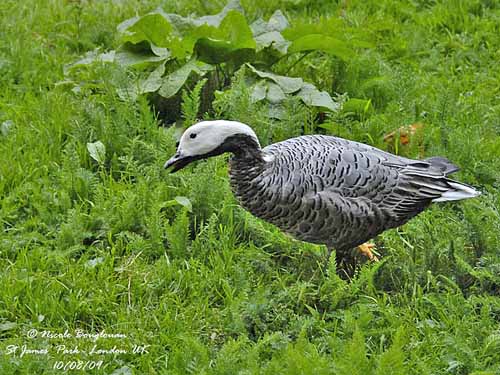
PROTECTION / THREATS / STATUS:
The Emperor Goose is classified as Near Threatened by BirdLife International. This species is still threatened by hunting in Russia, and by coastal oil pollution. Habitat loss in tundra due to climate change, and other changes in this habitat, may have negative impact on this species which numbers are fairly low.
